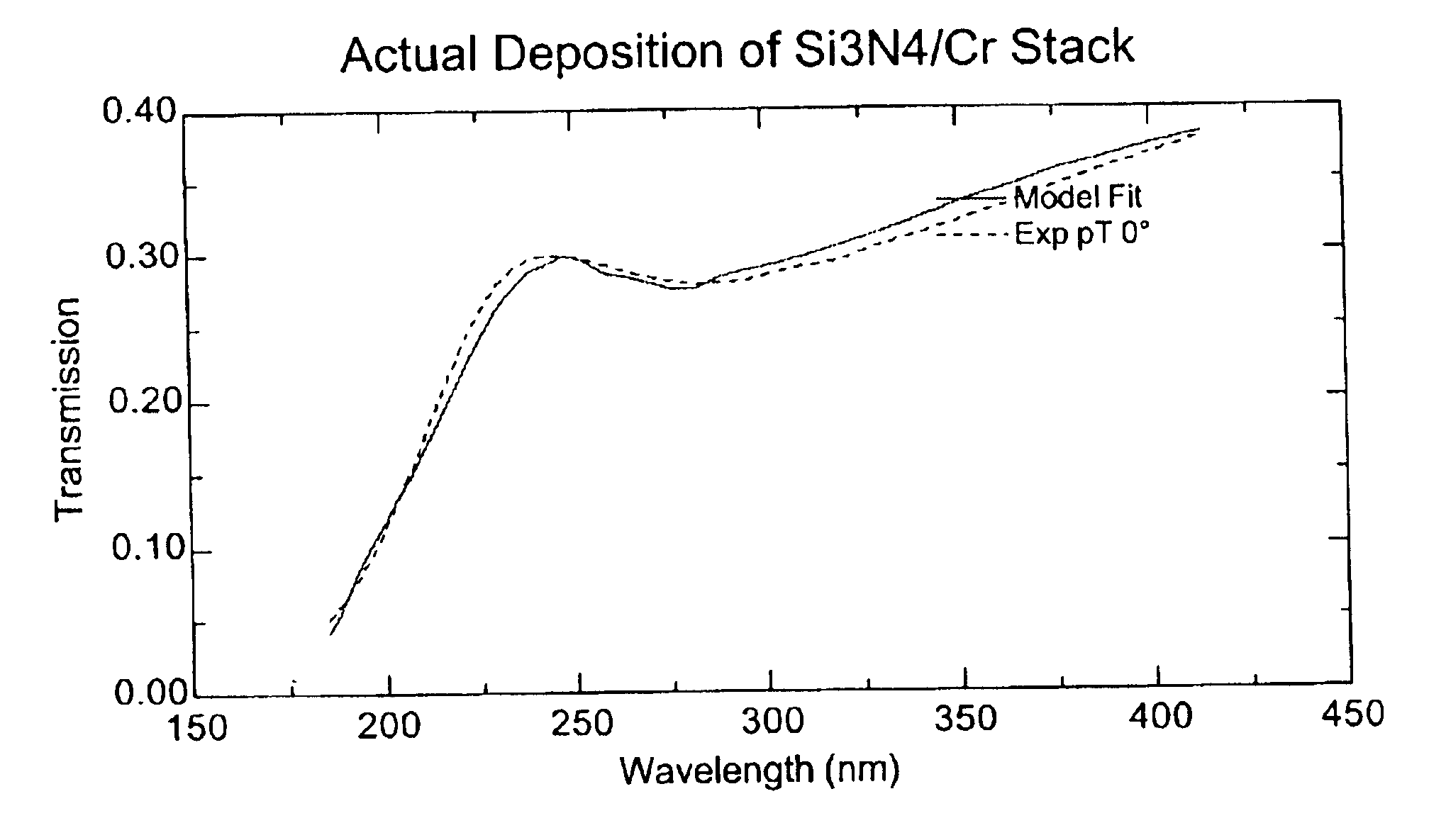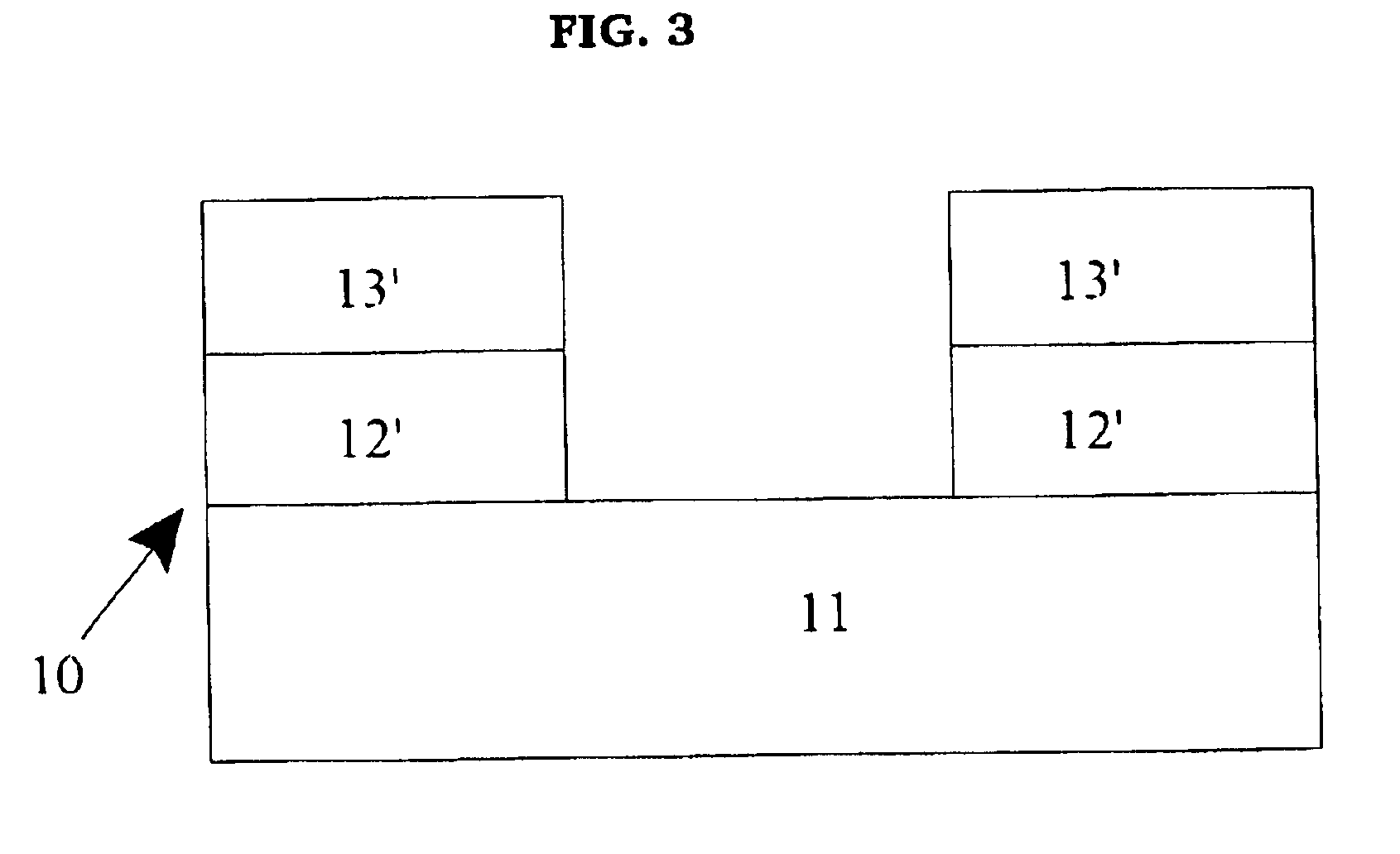Photomask having an intermediate inspection film layer
a technology of inspection film and photomask, which is applied in the direction of photomechanical equipment, instruments, and photosensitive materials, can solve the problems of affecting defects in the geometry of pattern design, and unwanted clear areas, so as to improve the inspection of all features
- Summary
- Abstract
- Description
- Claims
- Application Information
AI Technical Summary
Benefits of technology
Problems solved by technology
Method used
Image
Examples
example
An EAPSM was made to have a chromium intermediate layer deposited beneath a silicon nitride PSM layer. More particularly and as shown in FIG. 7A, the EAPSM 21 includes quartz as the transparent layer 31, non-stoichiometric chromium nitride as the intermediate layer 29 having a thickness of 115 Å, silicon nitride (e.g., Si3N4) as the PSM layer 27 having a thickness of 674 Å, chromium as the opaque layer 25 and a photoresist layer 23. The silicon nitride PSM layer 27 was tuned for 193 nm exposure tools and 365 nm inspection tools. Referring to FIG. 12, it was found that the EAPSM 21 transmitted light at a rate of 9% with a 180 degree phase shift at the 193 nm exposure tool wavelength. At the 365 nm inspection tool wavelength, the EAPSM 21 transmitted light at a rate of approximately 35%. As a result, the EAPSM was able to meet the optical requirements of both inspection and exposure tools.
It is noted that the present invention is not limited to the specified exposure and inspection to...
PUM
| Property | Measurement | Unit |
|---|---|---|
| thickness | aaaaa | aaaaa |
| thickness | aaaaa | aaaaa |
| thickness | aaaaa | aaaaa |
Abstract
Description
Claims
Application Information
 Login to View More
Login to View More - R&D
- Intellectual Property
- Life Sciences
- Materials
- Tech Scout
- Unparalleled Data Quality
- Higher Quality Content
- 60% Fewer Hallucinations
Browse by: Latest US Patents, China's latest patents, Technical Efficacy Thesaurus, Application Domain, Technology Topic, Popular Technical Reports.
© 2025 PatSnap. All rights reserved.Legal|Privacy policy|Modern Slavery Act Transparency Statement|Sitemap|About US| Contact US: help@patsnap.com



